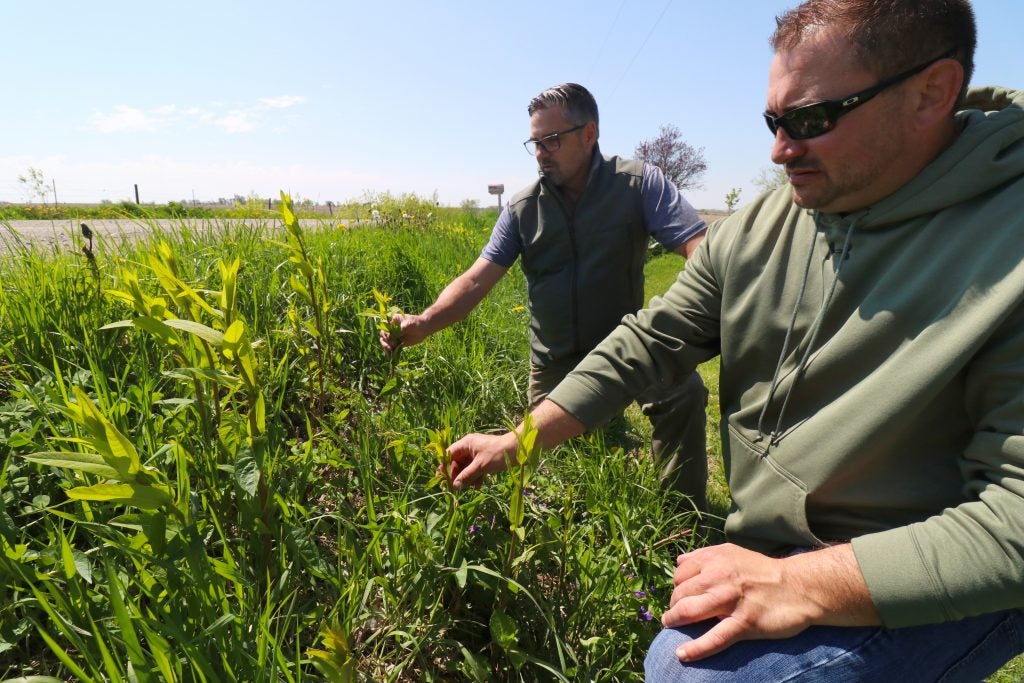It is a wild understatement to say it has been a hard year in agriculture. It has been a year of loss, heartbreak and stress. As a frontpage Washington Post article captured, “Farm bankruptcies and loan delinquencies are rising, calamitous weather events are ruining crops and profits are vanishing during Trump’s global trade disputes.”
I had to dig deep, but I was determined to find some silver linings.
As I sat with my pen, paper and thoughts, I found I had more and more to write. I was reminded that farmers have amazing grit and determination, which is why, despite the incredible challenges ahead, I remain firmly optimistic that we will find the ways to feed the world while sustaining the natural resources on which we all depend.
Here are a few examples of the many ways that farmers inspired me this year.
Farmers see increased yield resilience to extreme weather
Conservation practices enabled farmers to do better than they would have otherwise in the face of very challenging weather.
One of EDF’s farmer advisers in South Dakota — a state hit hard by flooding this year — was able to plant more than 90% of his fields despite heavy spring rains, which he attributes to conservation and ridge tillage, and high levels of crop residue left behind in his fields. In comparison, few of his neighbors were able to plant more than 60% of their fields because the ground was too wet.
This was not a one-off experience. Conservation practices contributed to the financial well-being and resilience of dairy farms in Pennsylvania, where economic challenges have been compounded with growing pressure to meet water quality and other sustainability goals.
Brett Reinford, a Pennsylvania dairy farmer, said:
On our farm, conversation practices just make sense. Our soil quality has been getting better year after year. We are constantly looking for ways to improve on what we are already doing. Receiving an economic return from simply doing the right thing is just an added bonus.
Conservation co-benefits multiply impact
Our farmer advisers and groups like the National Corn Growers Association (NCGA) and Minnesota Pork Producers Association have shown an incredible level of enthusiasm for restoring habitat for monarch butterflies and other pollinators.
The opportunity to provide multiple benefits by incorporating habitat restoration into existing practices that deliver water quality, water quantity and climate benefits is significant. Ultimately, it enables farmers to maximize resources to deliver the best bang for the buck and, in this case, the butterfly.

As Kevin Ross, president of the NCGA Corn Board, put it:
For us, it’s about biodiversity. We need different grasses and feedstocks for our operation. When you’re walking along these rural roads seeing milkweed and the monarch life cycle in action, watching that process, it’s a neat deal.
Farmers increase engagement on climate action
Farmers and grower associations are taking an increasing interest in and speaking up about the role that climate-smart agriculture policy can play in helping bolster resilience across the farm community.
In October, one of our farmer advisers, Fred Yoder of Ohio, testified before Congress about bringing farmers to the table to be part of the solution. Fred summed it up:
It’s time to stop debating whether or not the climate is changing because of natural or human activities and come together and advance proven, pragmatic and innovative agricultural solutions that benefit producers, the public and the planet. I’ve devoted much of my life to this cause, and that’s why I took a day off from my fall harvest to be with you for this very timely and important hearing.
Farmers from across the heartland wrote op-eds calling for bipartisan climate action and many visited Capitol Hill to educate members of Congress about how climate-smart agriculture can benefit farmers, rural communities and the environment.
As farmers prepare for 2020, I hope they are met with better harvest conditions and that these stories can provide hope for the future.
How farmer grit created unexpected bright spots in an extremely difficult year Share on XThis post originally appeared on AgWeb and is used with permission.









